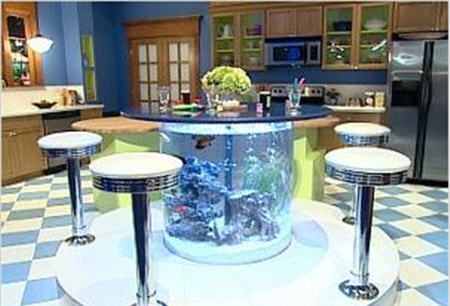The Real Truth About Ammonia With The Novice Aquarist

The Real Truth About Ammonia With The Novice Aquarist – Even though it is correct that ammonia can be quite toxic when perfectly located at the aquarium, it depends on independent water characteristics how deadly it actually becomes. Very often It can be left unsaid that there are actually two kinds of ammonia – ammonia and ammonium, most often simultaneously tested and summed which is known as ammonia.
Standard Ammonia Test kits (of whatever range) are usually only in a position to See the total quantity of ammonia components (ammonia + ammonium) in water. The actual toxicity are only able to be determined Using the use of the chart that correlates the actual amount of truly dangerous ammonia by referring to the actual pH with the water.
Where does Ammonia originate from’
Ammonia is produced within the aquarium from a serious number of sources, respiration by-products, urination and from fecal matter as well. Whilst fish are included with a newly established aquarium system, ammonia will be produced as fish pass water over their gills to obtain oxygen and pass off many toxic compounds in the fish.
By far the most dangerous source is normally when anything is left over after the feeding process. Whilst it hits all-time low, It’s going to begin to decay. The decay process of any organic material will rapidly produce ammonia like a normal by-product. The tragedy here is this fact major potential way to obtain ammonia is strictly under the charge of the aquarist,.
Within the new aquarium with live plants, newly transplanted live plants will often die back somewhat attributable to transport stress and drop dead and dying leaves since they recover and make new growth. In many cases the vegetation dies back significantly before it could possibly establish new growth. These waste vegetation parts also enhance the ammonia production while they decay.
Within the new aquarium with live plants, newly transplanted live plants will often die back somewhat due to transport stress and drop dead and dying leaves while they recover and create new growth. Oftentimes the vegetation dies back significantly before it may establish new growth. These waste vegetation parts also add to the ammonia production as they decay. A dead ringer for excess food left from a standard feeding, all dead or dying plant matter should be removed whilst It truly is observed.
One of the greatest sources of sudden ammonia/ammonium surges in the aquarium, new or matured, is the death of a fish.
People Who Viewed This Also Viewed :
External Related : Find more data from Google
Internal Related : aquarium-kit The Real Truth About Ammonia With The Novice Aquarist real aquarium kit







